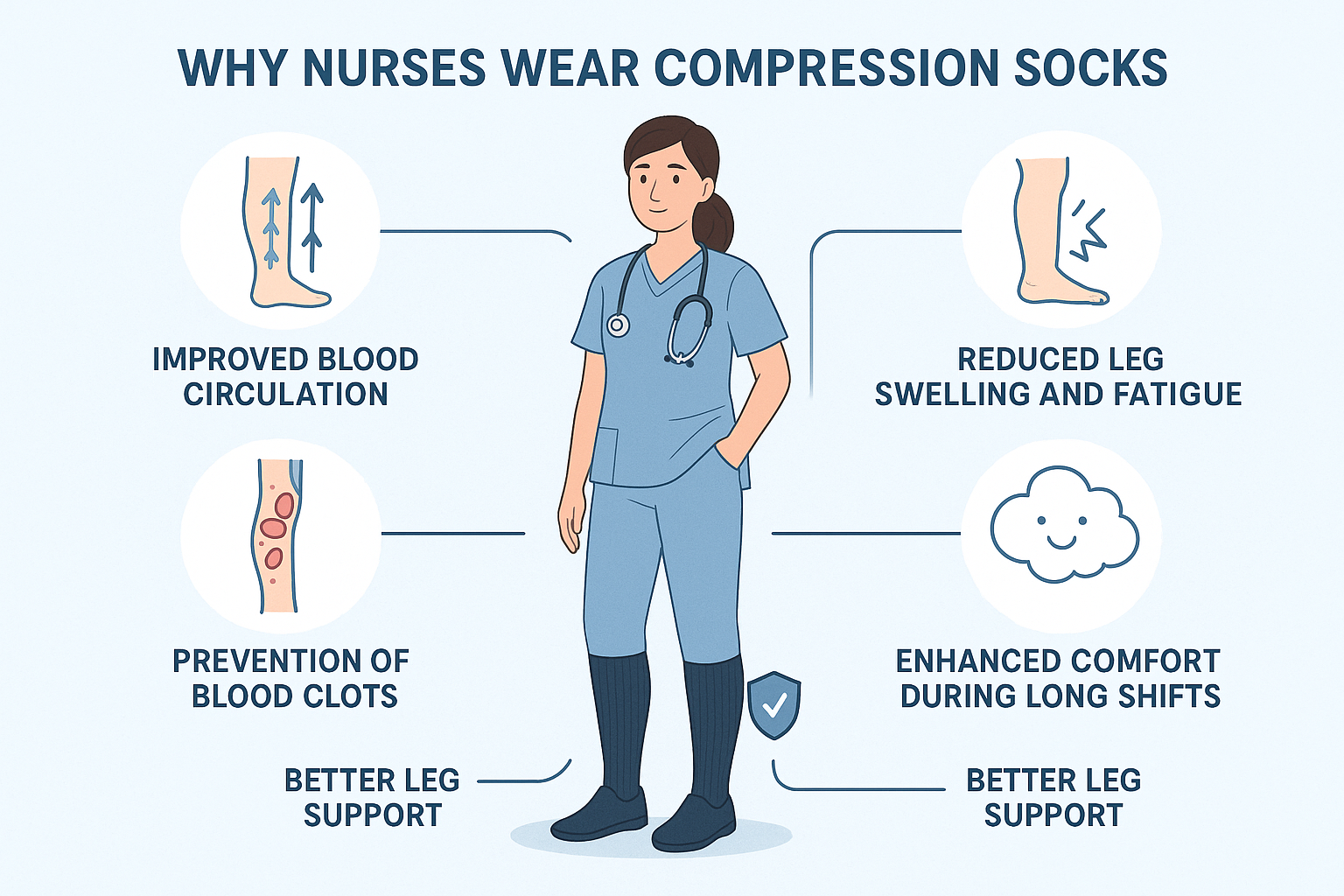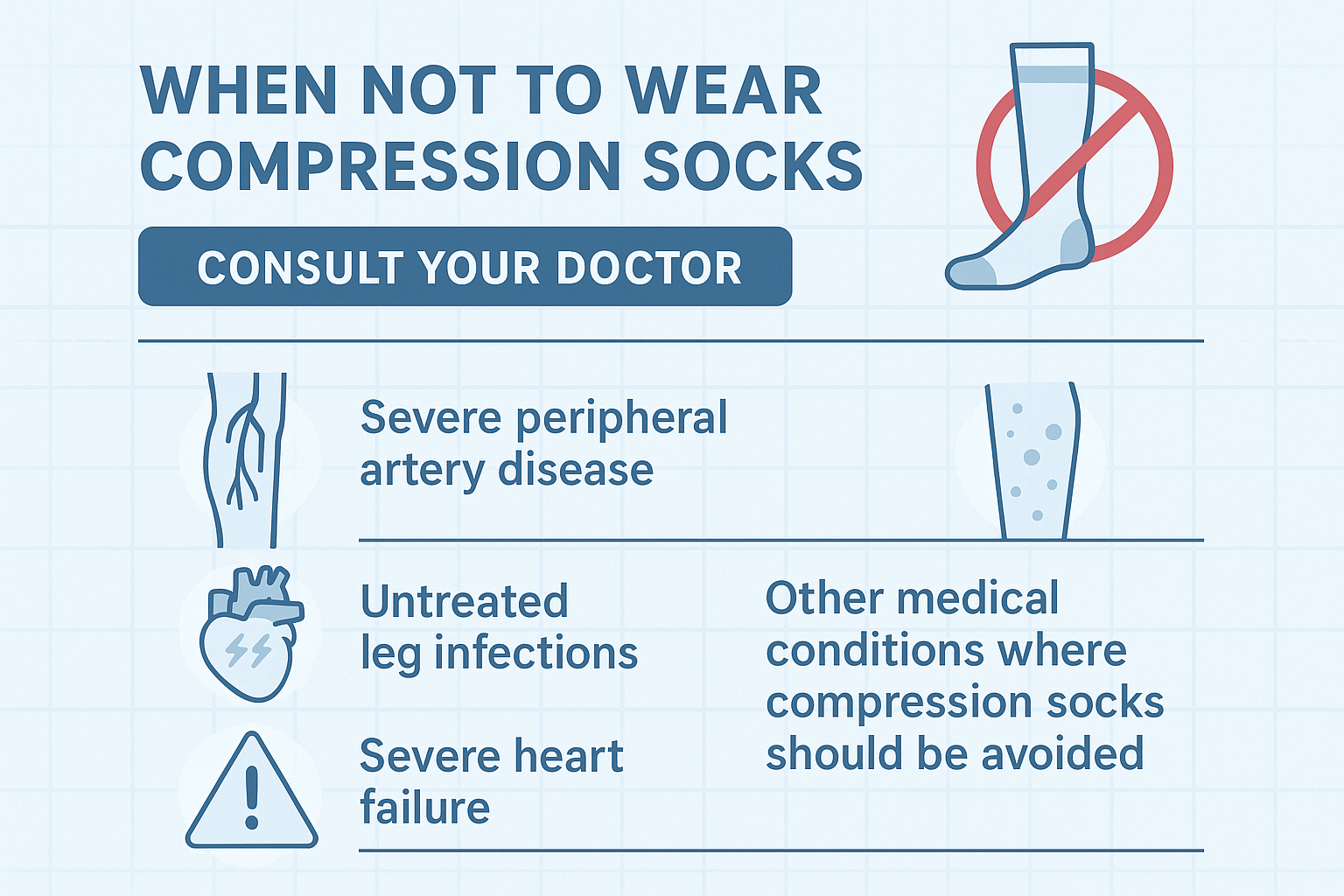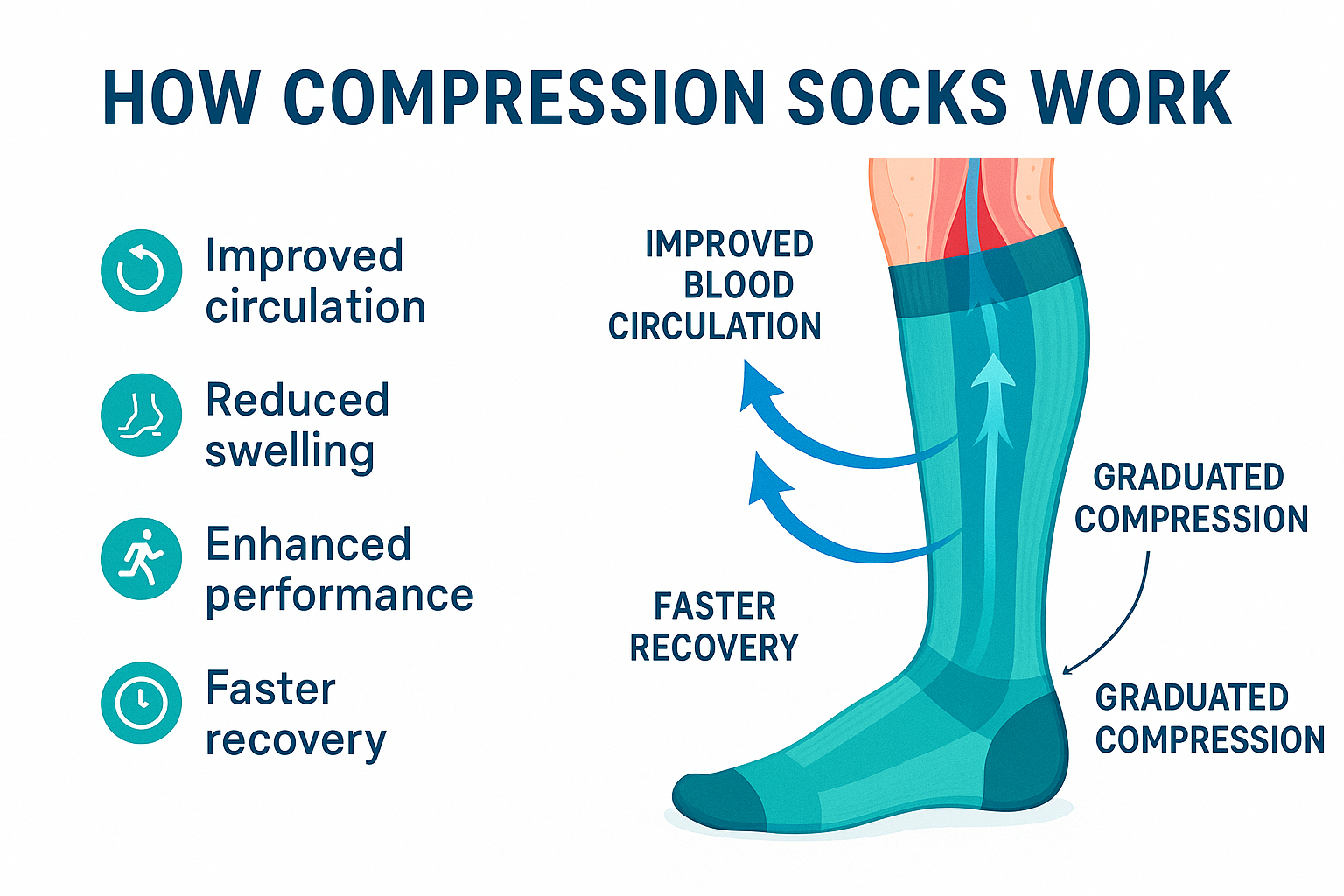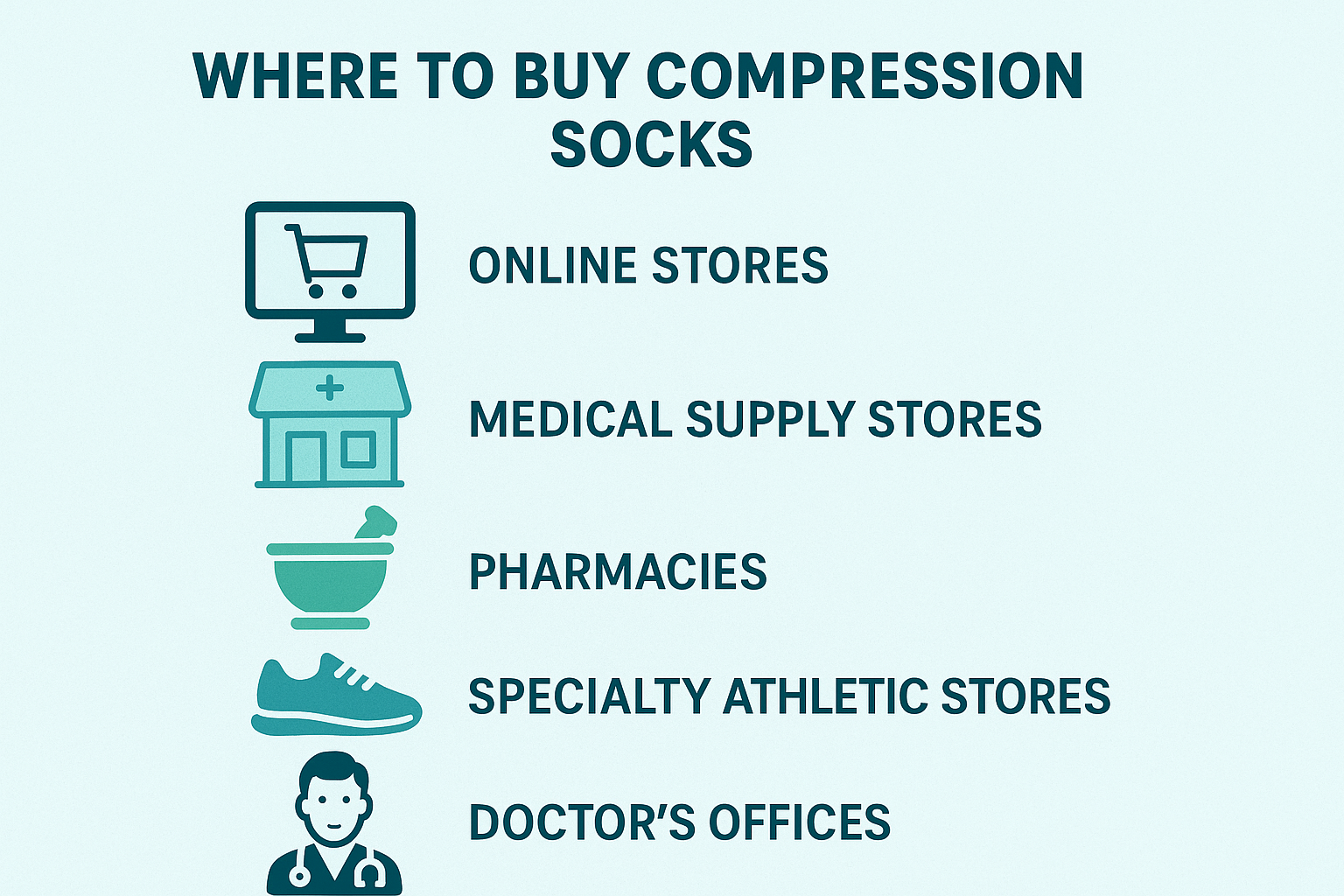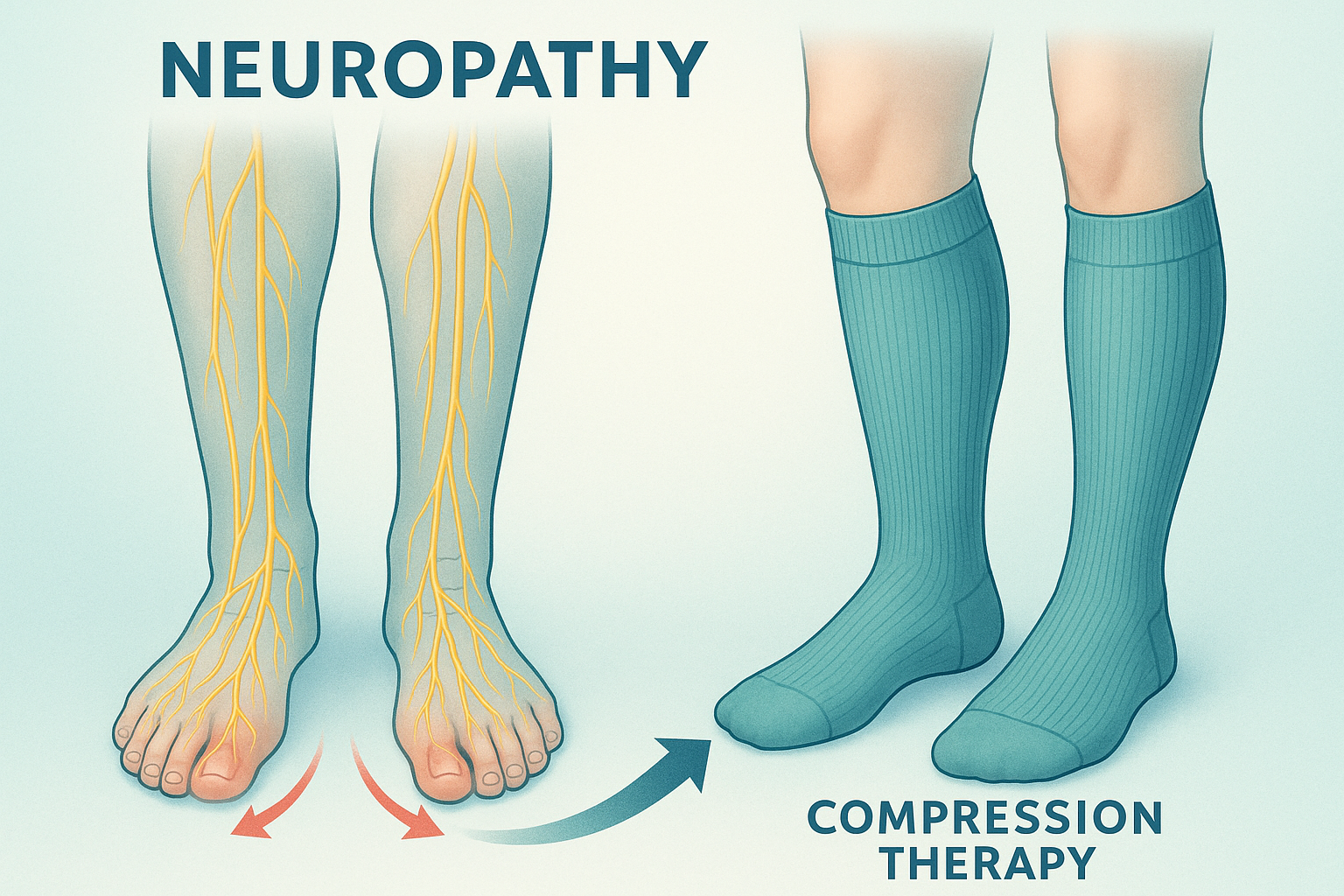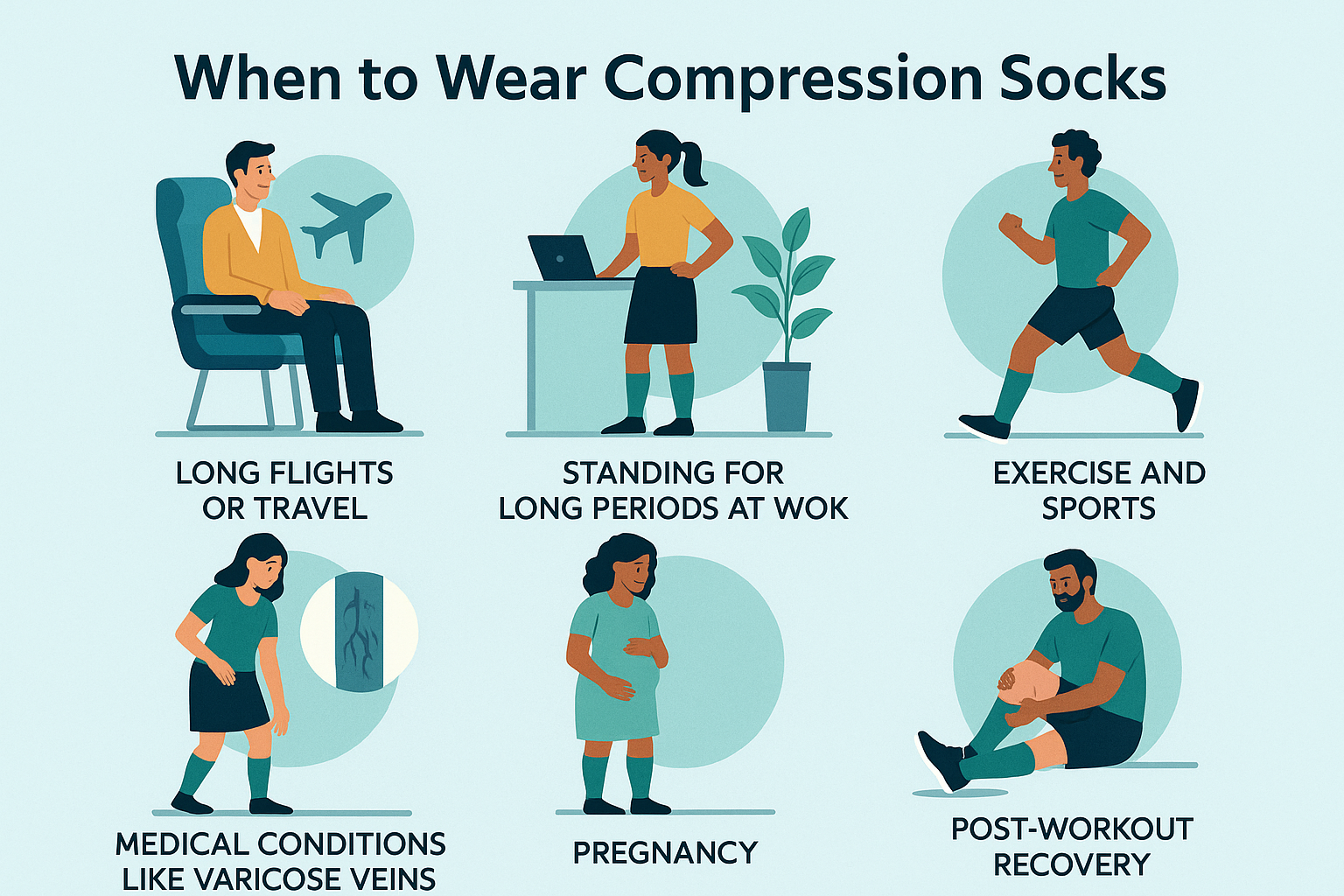
When to Wear Compression Socks
Compression socks aren’t just for athletes or people recovering from surgery — they’re for anyone who wants to improve leg circulation, reduce swelling, or prevent fatigue. Knowing when to wear compression socks can make all the difference in how effective they are.
In this guide, we’ll cover the best times and situations to wear compression socks, how long to wear them, and the key benefits for your health and performance. Whether you’re sitting, standing, flying, or recovering, Green Drop Compression socks are designed to keep your legs feeling refreshed and supported.
What Are Compression Socks?
Compression socks are specialized garments that apply gentle, graduated pressure to your legs. This pressure helps push blood back up toward the heart, preventing it from pooling in your lower limbs. They’re made with elastic materials that provide snug support without restricting movement.
They come in different compression levels, typically measured in millimeters of mercury (mmHg). Common options include:
- 8–15 mmHg: Mild compression for everyday wear or mild fatigue.
- 15–20 mmHg: Moderate compression for travel, standing jobs, or light swelling.
- 20–30 mmHg: Firm compression for recovery or medical conditions like varicose veins.
When Should You Wear Compression Socks?
The best time to wear compression socks depends on your activity level, health, and daily habits. Below are the most common times and scenarios when wearing them can deliver real benefits.
1. During Work Hours (Especially If You Sit or Stand All Day)
If your job involves long hours of sitting at a desk or standing on your feet — such as nurses, teachers, cashiers, and office workers — you’re a perfect candidate for compression socks. Sitting or standing for extended periods can cause blood to pool in your legs, leading to swelling and fatigue.
Why it helps: Compression socks improve circulation and reduce discomfort in the calves and ankles. You’ll feel less tired at the end of the day and notice fewer issues like varicose veins or leg heaviness.
2. During Travel (Flights or Long Car Rides)
Wearing compression socks while traveling is one of the best ways to prevent blood clots and swelling. Sitting in cramped conditions for hours can slow blood flow and cause fluid buildup in your lower legs — known as “traveler’s edema.”
When to wear them: Put your compression socks on before you board the plane or start your drive, and keep them on throughout the journey. They can significantly reduce the risk of deep vein thrombosis (DVT).
3. During Exercise or Physical Activity
Athletes and fitness enthusiasts wear compression socks to enhance performance and speed up recovery. The added support can reduce muscle vibration and soreness during and after workouts.
When to wear them: You can wear compression socks during your run, cycling session, or gym workout — and for several hours afterward to improve recovery and decrease lactic acid buildup.
4. After Exercise (Recovery Periods)
Post-workout recovery is another key time to wear compression socks. They help reduce inflammation and speed up muscle repair by maintaining steady blood flow and preventing swelling.
Many athletes wear them for 1–3 hours after workouts or even overnight for light recovery compression.
5. During Pregnancy
Pregnant women often experience swelling in their feet and ankles due to increased blood volume and hormonal changes. Compression socks are a safe, natural way to reduce this swelling and improve comfort.
Best time to wear them: In the morning before swelling starts, and throughout the day. Choose mild to moderate compression (15–20 mmHg) for the best comfort.
6. During Long Days on Your Feet
If you’re walking or standing for long stretches — whether you’re at an event, working retail, or sightseeing — compression socks can prevent your legs from feeling heavy and sore by the end of the day.
7. During Recovery from Surgery or Injury
Compression socks are often prescribed after surgery, especially for lower body procedures. They help prevent blood clots and promote faster healing by improving venous return.
Always follow your doctor’s instructions for post-surgical wear, as the recommended compression level and duration can vary.
8. While Sleeping (In Certain Cases)
Although not everyone needs to sleep in compression socks, some people benefit from overnight wear — especially those with chronic swelling or venous insufficiency.
If you’re wondering, “Can you sleep in compression socks?”, the short answer is yes — if your healthcare provider recommends it. For most people, it’s best to wear them during the day and remove them before bed.
When Not to Wear Compression Socks
While compression socks are beneficial for most people, there are some exceptions. You should avoid wearing them if you have:
- Peripheral artery disease (PAD)
- Severe skin infections or dermatitis
- Congestive heart failure (CHF) unless prescribed
- Open wounds or sores on the legs
When in doubt, consult a healthcare professional before starting daily use.
How Long Should You Wear Compression Socks Each Day?
For most people, compression socks can be worn safely for 8–12 hours a day. If you’re wearing them for travel or recovery, keep them on for the duration of your trip or until your swelling subsides.
To avoid discomfort, put them on first thing in the morning — when swelling is minimal — and remove them before bedtime unless otherwise advised by your doctor.
Benefits of Wearing Compression Socks at the Right Time
- Improved blood circulation and oxygen delivery
- Reduced leg swelling and fluid retention
- Prevention of varicose veins and spider veins
- Faster muscle recovery and reduced soreness
- Lower risk of blood clots during long travel
- Increased comfort and energy during long workdays
By wearing compression socks at the right time, you can make the most of these health and performance benefits.
Tips for Getting the Most Out of Compression Socks
- Put them on in the morning: Legs are least swollen after a night’s rest.
- Choose the right size: Measure your calf and ankle for a proper fit.
- Wash them regularly: Clean socks maintain elasticity and hygiene.
- Replace every 3–6 months: The compression effectiveness wears out over time.
- Pair with activity: Combine use with walking or stretching to further improve circulation.
FAQs About When to Wear Compression Socks
Should I wear compression socks every day?
Yes, if you experience leg fatigue, swelling, or circulation issues, daily use is safe and beneficial. Many professionals wear them every workday to prevent long-term vein problems.
Can I wear compression socks while working out?
Absolutely. Athletes wear them during training to enhance endurance and reduce soreness. They also aid in faster post-workout recovery.
Can I wear compression socks at night?
Some people can, especially for medical reasons, but for most, it’s better to wear them during the day. For more details, read our guide on sleeping in compression socks.
Do compression socks help with varicose veins?
Yes. Wearing compression socks regularly can reduce symptoms like aching, swelling, and heaviness associated with varicose veins.
When should I avoid wearing compression socks?
If you have poor arterial circulation, open wounds, or certain heart conditions, consult your doctor before wearing them. Otherwise, they’re safe for most adults.
Related Guides
Final Thoughts: Listen to Your Legs
Wearing compression socks at the right time can make a huge difference in your daily comfort, performance, and long-term leg health. Whether you’re traveling, working, exercising, or pregnant, the key is consistency and proper fit.
Green Drop Compression socks are designed to keep your circulation flowing and your legs feeling light — whenever you need them most. Explore our collection of compression socks to find your perfect pair.



